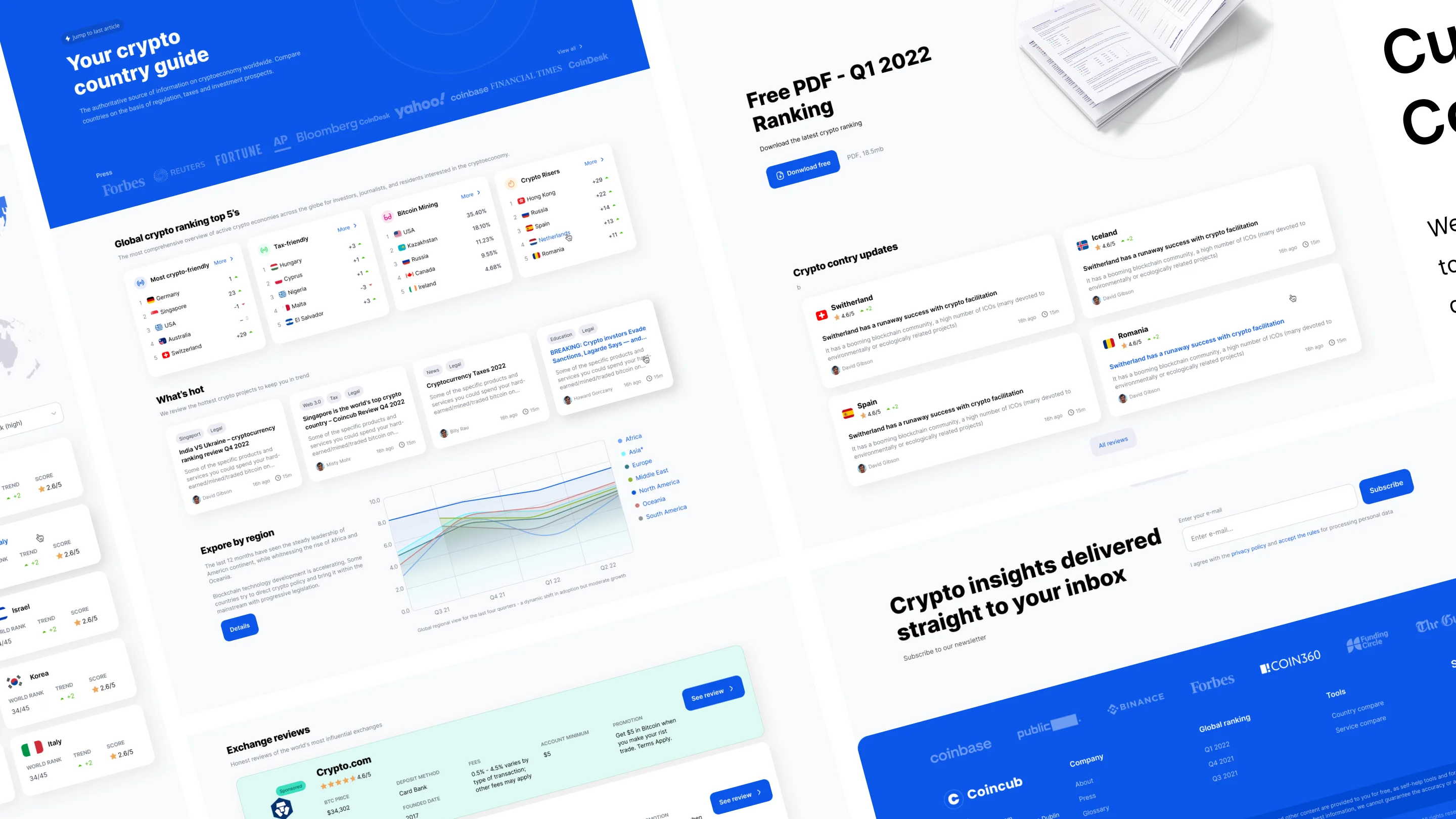Key Steps to Launching a Crypto Business Website

The cryptocurrency and blockchain space is booming, offering innovative opportunities for entrepreneurs. At the heart of any successful crypto venture is a robust, secure, and trustworthy website. However, launching a crypto business website isn’t like setting up a typical online store or blog. It comes with unique challenges, particularly concerning security, regulatory compliance, and building user trust in a domain often perceived as complex and risky.
This guide outlines the key steps to navigate the intricacies of launching your crypto business website, helping you lay a solid foundation for success.
Disclaimer: This article provides general information and does not constitute legal or financial advice. The crypto regulatory landscape is complex and varies by jurisdiction. Always consult with qualified legal and cybersecurity professionals before launching any crypto-related business.
Step 1: Define Your Crypto Niche and Business Model
Before a single line of code is written, crystalize your business idea:
- What is your specific offering? Are you launching a:
- Cryptocurrency exchange or brokerage?
- Custodial or non-custodial wallet service?
- NFT marketplace or minting platform?
- Crypto news, education, or analytics portal?
- Decentralized Finance (DeFi) application?
- Crypto payment gateway?
- Blockchain consulting service?
- Who is your target audience? Are you catering to beginners, experienced traders, developers, institutional investors, or a specific industry vertical?
- What is your Unique Value Proposition (UVP)? How will you stand out in a competitive market? What problem do you solve better than anyone else?
Clarity here will inform your website’s features, design, technology stack, and legal considerations.
This is arguably the most critical and challenging step. Failure to comply can have severe consequences.
- Seek Expert Legal Counsel: Engage lawyers specializing in cryptocurrency and blockchain law in your operating and target jurisdictions.
- Research Jurisdictional Regulations: Laws vary dramatically worldwide (e.g., MiCA in Europe, SEC and FinCEN guidelines in the US, varying approaches in Asia). Understand licensing requirements.
- KYC/AML Compliance: If your business involves financial transactions, Know Your Customer (KYC) and Anti-Money Laundering (AML) procedures are likely mandatory. Integrate robust verification solutions.
- Data Privacy: Comply with data protection laws like GDPR (Europe), CCPA (California), and others relevant to your users.
- Essential Legal Pages: Your website must include:
- Terms of Service: Outlining user obligations, your responsibilities, dispute resolution, etc.
- Privacy Policy: Detailing how you collect, use, and protect user data.
- Risk Disclosure: Clearly stating the risks associated with crypto assets and your services.
- Cookie Policy.
Step 3: Choose the Right Domain Name and Hosting
- Domain Name:
- Memorable & Brandable: Easy to recall and reflects your brand.
- Relevant: Aligns with your crypto niche.
- TLD Choice:
.comis standard, but.io,.xyz, or even.cryptoare popular in the space. Check availability and potential trademark conflicts.
- Web Hosting: This is not an area to skimp on for a crypto business.
- High Reliability & Uptime (99.9%+): Essential for user trust and operational continuity.
- Robust Security Features: SSL/TLS certificates (HTTPS is a must), DDoS mitigation, Web Application Firewalls (WAF), malware scanning.
- Scalability: Choose a plan that can grow with your user base and transaction volume.
- Responsive Customer Support: Preferably with experience in hosting secure applications.
- Consider VPS, Dedicated Servers, or Cloud Hosting (AWS, Azure, Google Cloud): Shared hosting is generally not recommended for platforms handling sensitive data or financial transactions.
Step 4: Plan Your Website Structure and Key Features
Your niche dictates the necessary features. However, some are common:
- Core Pages:
- Homepage: Clear UVP, trust signals, calls-to-action.
- About Us: Build transparency with information about your team and mission.
- Services/Products: Detailed explanations of your offerings.
- Contact Us: Secure communication channels.
- Blog/News: For updates, educational content, and SEO.
- FAQ: Address common user questions.
- Legal Pages (as mentioned in Step 2).
- Crypto-Specific Features (Examples):
- Real-time price tickers, charts, and market data.
- User registration, secure login (with 2FA/MFA), and dashboards.
- Wallet integration (e.g., connecting to MetaMask, WalletConnect) or native wallet functionality.
- Secure transaction processing and history.
- NFT minting, Browse, and trading capabilities.
- Staking or yield farming interfaces (for DeFi).
- Educational resources, glossaries, tutorials.
- Admin panel with robust security and management tools.
- User Experience (UX) and User Interface (UI):
- Intuitive Navigation: Users should find information easily.
- Clean, Professional Design: Instill trust and credibility. Avoid overly complex or “scammy” aesthetics.
- Mobile-First Responsiveness: Essential for accessibility.
- Fast Loading Speed: Critical for user retention and SEO.
Step 5: Design and Development – Prioritize Security
- Design Philosophy: Focus on clarity, transparency, and trustworthiness. Your design should reassure users that your platform is secure and legitimate.
- Development Approach:
- Custom Development: For complex platforms like exchanges or DeFi protocols, languages like Node.js, Python, Go, or Ruby, along with frameworks like React, Angular, or Vue.js for the frontend, are common.
- CMS (e.g., WordPress): Suitable for content-heavy sites like crypto news or educational platforms. Crucially, it requires significant security hardening (security plugins, custom configurations, regular updates).
- Blockchain Development: If building DApps or interacting directly with blockchains, specialized languages (e.g., Solidity for Ethereum) and frameworks (e.g., Hardhat, Truffle) will be needed.
- Security Best Practices (Integrate from Day One):
- HTTPS Everywhere: Encrypt all data in transit.
- Multi-Factor Authentication (MFA): Mandatory for all admin and user accounts.
- Secure Coding Practices: Follow OWASP Top 10 guidelines to prevent common vulnerabilities (XSS, SQL injection, etc.).
- Regular Security Audits & Penetration Testing: Conducted by reputable third-party firms, especially before launch and after major updates.
- Data Encryption: Encrypt sensitive data at rest and in transit.
- API Security: Secure API keys and implement rate limiting.
- Input Validation: Sanitize all user inputs.
- Wallet Security (if applicable): Implement cold storage for the majority of funds, use multi-signature wallets, and follow industry best practices meticulously.
- DDoS Protection & Web Application Firewall (WAF).
- Incident Response Plan: Be prepared for potential security breaches.
Step 6: Integrate Essential Crypto Tools and APIs
Leverage third-party services to enhance functionality, but ensure they are reputable and secure:
- Price Feed APIs: CoinMarketCap, CoinGecko, CryptoCompare for real-time market data.
- Wallet Connectivity: Web3.js, Ethers.js, WalletConnect libraries.
- Payment Gateway APIs: BitPay, CoinPayments, Coinbase Commerce for accepting crypto/fiat.
- Blockchain Explorer APIs: To display transaction details or verify on-chain data.
- Charting Libraries: TradingView or similar for advanced charting.
- KYC/AML Verification Service APIs: Jumio, Veriff, Onfido for identity verification.
Step 7: Craft High-Quality, Trustworthy Content
Content is key to building trust and authority:
- Clarity and Simplicity: Explain complex crypto topics in an easy-to-understand manner.
- Transparency: Be open about your team, business model, physical address (if applicable), and security measures.
- Educational Value: Create blog posts, guides, tutorials, and a glossary to educate users and improve SEO.
- SEO Optimization: Research and use relevant keywords (e.g., “buy bitcoin,” “NFT marketplace,” “DeFi staking platform”) naturally within your content.
- Security Information: Clearly communicate the steps you take to protect user assets and data.
Step 8: Rigorous Testing Before Launch
Thorough testing is non-negotiable:
- Functionality Testing: Ensure all features, forms, buttons, and links work as expected.
- Security Testing: Perform vulnerability scans, penetration testing (ideally by a third party), and review security configurations.
- Usability Testing: Get real user feedback on navigation, design, and overall experience.
- Compatibility Testing: Test across different browsers, devices, and operating systems.
- Performance Testing: Check load speeds and test how the site handles concurrent users (stress testing).
- Blockchain Interaction Testing: If applicable, test all smart contract interactions thoroughly on a testnet. Simulate transactions and edge cases.
Step 9: Launch and Initial Marketing
- Pre-Launch (Optional): Generate buzz with a coming soon page, social media announcements, and community engagement.
- Launch Checklist: Go through a final comprehensive checklist before going live.
- Monitoring: Implement analytics (e.g., Google Analytics, Plausible) and performance monitoring tools immediately.
- Initial Marketing:
- Community Engagement: Be active and genuine on crypto-focused platforms like Twitter/X, Telegram, Discord, Reddit.
- Content Marketing & SEO: Publish valuable content regularly.
- Public Relations: Consider reaching out to crypto media outlets.
- Influencer Marketing: Collaborate with reputable crypto influencers (vet them carefully!).
- Listings: Get listed on relevant crypto directories, review sites, and coin tracking platforms (e.g., CoinMarketCap, CoinGecko if you have a token).
Step 10: Ongoing Maintenance, Security, and Compliance
Launching is just the beginning:
- Regular Software Updates: Keep your CMS, plugins, libraries, and server software patched and up-to-date.
- Continuous Security Monitoring: Actively monitor for threats, conduct regular security checks, and adapt to new vulnerabilities.
- Data Backups: Implement and test a regular, secure backup schedule.
- Stay Updated on Regulations: The crypto legal landscape is dynamic. Continuously monitor and adapt to changes with your legal counsel.
- Excellent Customer Support: Provide responsive and helpful support to build user loyalty.
- Community Management: Nurture your online community.
Launching into the Future of Finance
Launching a crypto business website is a significant undertaking that demands meticulous planning, a security-first mindset, and a commitment to navigating a complex regulatory environment. By following these key steps and prioritizing trust, transparency, and compliance, you can build a strong online presence that positions your crypto venture for long-term success in this exciting and rapidly evolving industry.
Crypto Adventure – A Study of an Incredible Website Transformation








